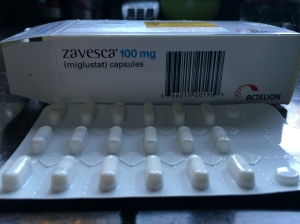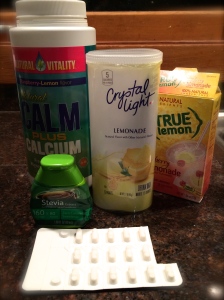If you have never been faced with a very serious health condition, you might not think very much about health insurance. In the United States, if you are fortunate, you have coverage through your job or you bought a policy on one of the new government web sites. Hopefully, the benefits are reasonable. You pay your copays, perhaps $25 or so when you see the doctor for a physical. Perhaps, you have a few prescriptions here or there, but nothing too major. This was the way we were, extremely fortunate, somewhat naive and not overly concerned. We had physicals once a year. We did not really think all too deeply about the exact details of our health insurance policy. Ignorance is bliss.
We believe our health benefits are good, even above average. We continue to learn about our policy and the specifics of how we define good coverage. Now with the Affordable Care Act, the general population has probably learned a bit more about health insurance, shopping on the exchanges, and reading about the various policies and options. Even in good health, I’m sure there are some people who pay careful attention to their insurance policies. Kudos to those individuals! It’s incredibly important. GM1 is an extremely strong forcing function that emphasizes the importance of health insurance.
The most harrowing experience with our insurance so far was trying to get the coverage for miglustat for Iris. Miglustat is not FDA-approved for GM1. Our doctors told us that miglustat is possibly our one and only chance to slow down the progression of the disease. It’s absolutely terrifying when obtaining a medication for your child is in the hands of an insurance company. When we first started out on this journey, I was extremely poorly outfitted for battle. I was armed with my flimsy insurance card and a 1-800 phone number.
The first group of doctors we saw after diagnosis recommended miglustat at the first appointment where we met them. I had already read about it a bit. Naively, I thought they would write a prescription and we would go home with the drug in hand. This is absolutely not how things unfolded. This is not Tylenol or an antibiotic. This is a drug that costs more money than nearly anyone in the entire general population can afford. No one can afford miglustat without insurance, except the fabulously wealthy. To be specific, for the particular dosage recommended by our doctors, the cost is more than $1000 a day. Perhaps your insurance gets a better rate than ours or perhaps you live in another country where the drug is cheaper. Still, who can or would want to shell out the cost of this drug without insurance?
At the first appointment where the drug was mentioned, we were told that the next step was the confirmation of the diagnosis through DNA testing. We were told that the DNA testing would take 16 weeks. Before the DNA testing, we had 2 enzyme panels to confirm the diagnosis. This particular team of doctors seemed to want to wait to prescribe the medication until those DNA tests were conducted. In retrospect, perhaps they also wanted to give us the space the think about the prescription. At that same appointment, the geneticist mentioned the names of three specialists whom he considered the best in the country with respect to GM1.
Hours after the appointment, I sat at my laptop, wracking my brain, trying to recall the names of the three specialists that were mentioned. I emailed the other doctor who was present at the appointment to ask him for the names of the specialists. He was the only doctor who gave me his email address. Frankly, I know he later regretted giving me his email. I barraged the poor doctor with questions. Learning was my way of coping.
Unfortunately, he did not remember the names of the specialists either. I started searching the internet for various doctors who specialize in lysosomal storage diseases, carefully perusing the names of the doctors. Eventually, after hours of searching, I recalled all three names, using Google to prompt my memory. I regretted not writing down the names at the appointment. I like to believe that I am a relatively organized person. The high level of emotional distress at these first appointments made it incredibly hard to process or remember anything.
16 weeks of waiting for a DNA panel before initiating treatment was simply too much for me to bear. I contacted the specialist who was closest geographically. We made an appointment to see the specialist in the Midwest, more than 1500 miles away and they promised to help us initiate treatment. The first available appointment was approximately 8 weeks following the diagnosis.
It was the doctors in the Midwest who first initiated the request to get insurance coverage for miglustat. In retrospect, I’m so grateful that we kicked off that process of getting insurance coverage before the DNA testing was complete. The DNA testing took forever. The insurance approval process to get miglustat took forever too. The processes we endured were slower than any hospital dramatization on television would ever have you believe.
The first attempt at getting a prescription was immediately rejected. Prior authorization was definitely in order. For a drug as expensive as miglustat, of course, prior authorization is required. We learned that we basically had 3 shots at getting an approval. Think of it as three strikes and you are sh*t out of luck. Reading the word “denied” was like twisting a knife in my gut. The second appeal was also denied citing the lack of FDA-approval for the drug for GM1. Denied. Denied. Twist. Twist. The doctors told us that for other patients and other companies, “sometimes is just goes straight through.” Other families, other companies…
Our local neurologist tried to stay positive, telling us “insurance companies usually come around.” What if we were in the group for whom the company does not “come around”? Iris is already in that incredibly tiny minority of those diagnosed with GM1. How could we have confidence that fate would not have its way with us again?
By the time the second denial rolled around, complete panic had set in. I started to harbor a high level of animosity towards our insurance company. Isn’t the purpose of health insurance to pay for extremely expensive drugs and procedures? I frantically formulated a plan on how to get the drug approved.
Our first neurologist mentioned compassionate use, i.e., asking the drug company to just give the drug to us. This involved consulting another family in England who had obtained the drug directly from the pharmaceutical company and consulting their physician. I was told that the CEO of the company is a good man, but otherwise, I was not sure how to proceed. I contacted the company directly via an online form and spoke to someone on the phone who told me to ask our doctors about working with their specific compassionate use program.
I consulted one of the doctors in the Midwest about compassionate use. The doctors in the Midwest had a ton of experience with getting the approvals. Still, by the time I mentioned compassionate use and the second denial had occurred, those very same doctors told us that prayers were in order. The prospects of getting the drug were waning. Visions of selling every belonging we own to get the drug kept me up at night.
I contacted a patient advocacy organization and enlisted their help. I started nagging all of our local doctors for letters of support to supply to the insurance company. I sent a cute picture of Iris to be included in the appeal. I wanted the insurance company to see the face of a little girl who needed this medicine as opposed to just seeing the black and white type of her medical records.
Through the patient advocate, supporting materials and letters were submitted from the National Institute of Health. For the third and final appeal, an external review, in summary, we submitted 3 letters of support from our local doctors, a letter of support from the patient advocacy group, and we submitted the materials from the NIH. The doctors from the Midwest included more than one hundred pages of materials that included medical records and relevant research. All the documents were sent via certified mail. The team in charge of the appeals said that in the past, appeals had been lost or the insurance companies claimed to have never received them.
The excruciating wait continued.
Ultimately, our primary insurance approved coverage. We prevailed. The third appeal was successful. The external review panel approved the coverage in December 2013, 4 months after diagnosis. Our primary insurance company conveniently neglected to tell us that they approved the coverage. It was not until I called them for the n-th time in January that someone actually told me the coverage had been approved in early December. I had to request a letter to document the official approval. That letter did not arrive until the end of January.
I never realized the extent to which the parents are responsible for advocating for their children. Of course, I have some inkling. I am a responsible person and parent. Still, somehow the extent of my role in navigating the healthcare system surprised me. I was somewhat shocked when one of our main doctors told me that I am the one in the driver’s seat. I never imagined the herculean effort that is required to manage this process. The sheer number of emails and phone calls exhausted me. We are so grateful that all the blood, sweat and tears yielded an approval.
Do not take your health insurance for granted. Do not take your health for granted. If your insurance company denies coverage, ask again and ask again. Ask as many ways as you know how. Do not stop until you get what you need for your child.

